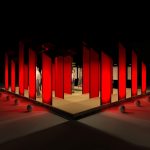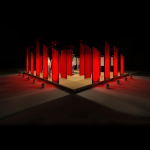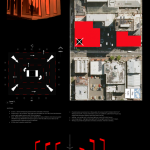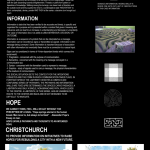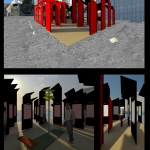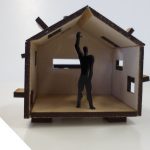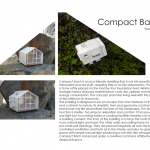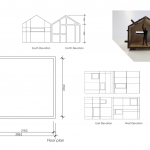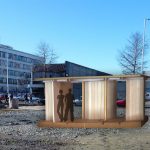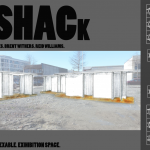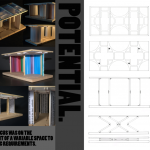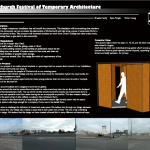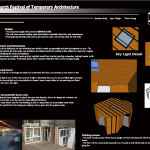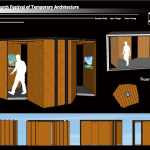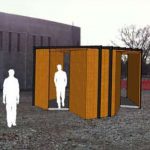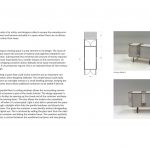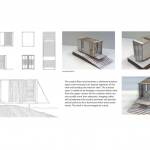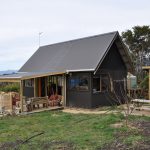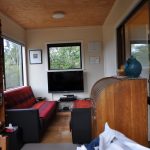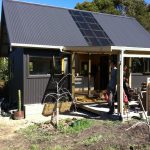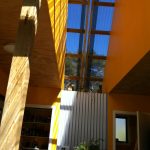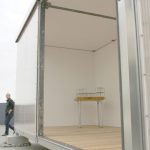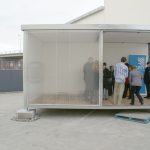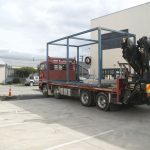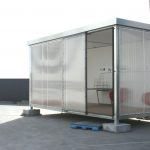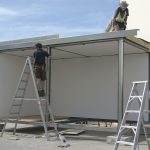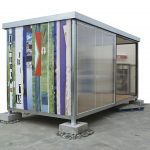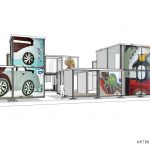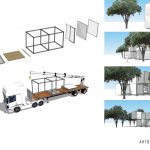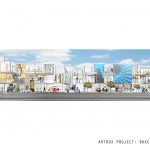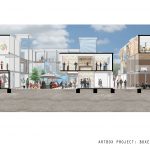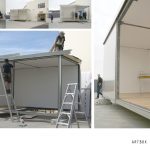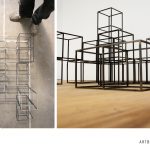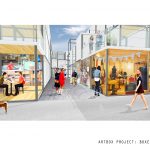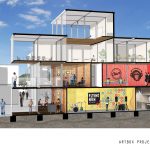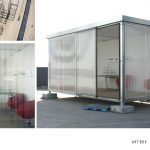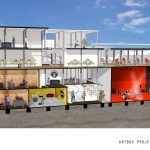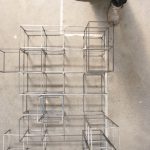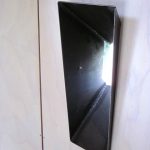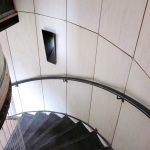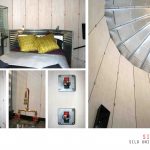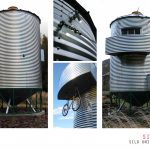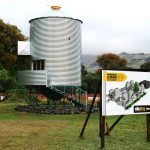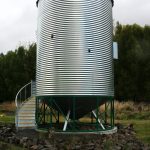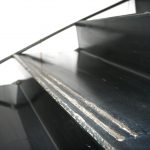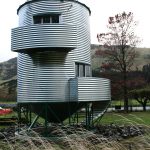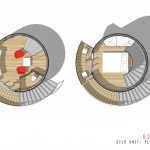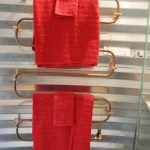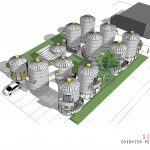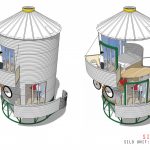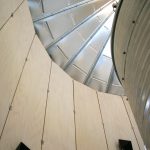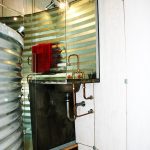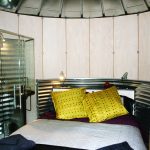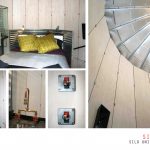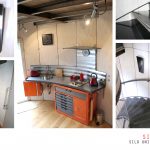


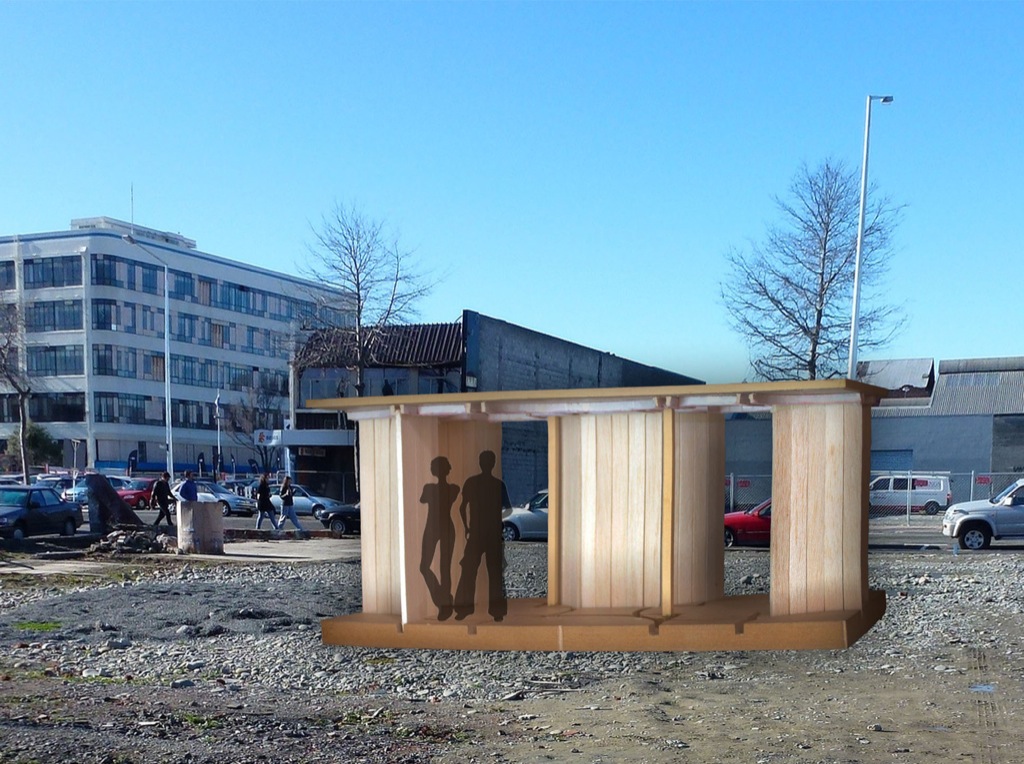
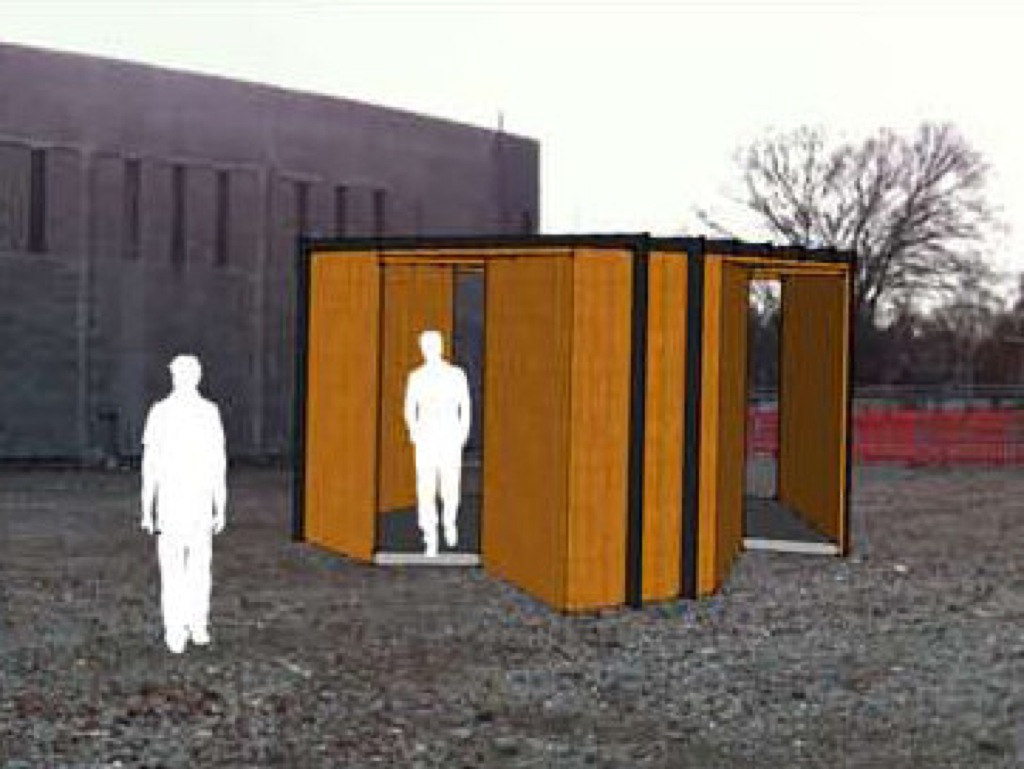
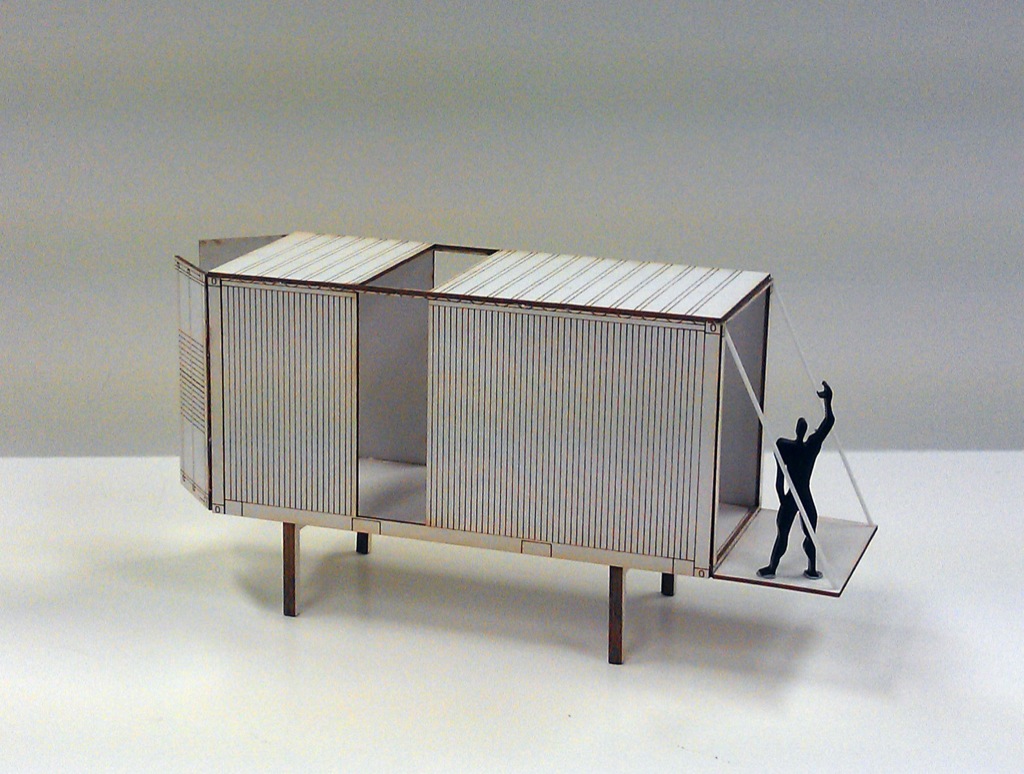
Living large with 10m2 buildings
Two 10 square metre buildings built rather close together. Eaves and awnings nearly connect the two buildings.
How are we going to live well, with purpose, and with less reliance on resources like materials and energy?
The SHAC Challenge is a way to learn about the building code, experiment with buildings, and to develop prototypes for our new built environment. We designers, engineers, architects, builders, and others will be creating our new built environment for the rest of our lives. Lets have fun with this: Enter the SHAC 10m2 Challenge! – due 20 August 2012. [entry details…]
For example, energy is an important resource, and in New Zealand we presently use about 40% of our total personal energy for transport, 20% in the home and to produce our food, and 40% to produce the stuff we buy ( Scadden, p12 ). [Burning coal and oil in far-away, overseas factories].
Our new built environment will reduce our need for resources like water and energy by a number of methods. Our judges will consider entries according to these points, from technical improvements to projects that inspire creativity and support people so that they have understanding, energy, and the will to create. SHAC judges will take a wholistic approach in judging.
Judging Criteria
1) responding to a need
2) improving our knowledge, technical ability, and desire for durable, repairable stuff [from housing to cell phones], so that over time we have much less need to buy so much of it. Teaching young people how to design, build, and maintain buildings and things is a great start!
3) stimulating and developing knowledge, awareness, and use of small quantities of valuable renewable electricty.
4) reducing the need for, and facilitating alternatives to private automotive travel
5) reducing the need for, and facilitating alternatives to regular business travel
7) Stimulating the imagination and supporting groups of people to make progress on creating an environmentally sound and socially just society.
8) Exhibiting a quality and care of construction that inspires others to support, promote similar projects, and adapt and reuse your designs in future work.
F3 Artbox
F3 SiloStay
SHAC Awards 2012

Rebuild and Reuse – for the Whole House Reuse project Juliet Arnott –
Design – F3 Design
Community Development – Joshua Durrant, Jess Smale, Sophie Moore
Micro and Temporary Architecture – Gapfiller
Commercialisation – Danny Squires and Martin Luff ThinkRadical.Net
On the 2-3 May 2012, SHAC presented the 2nd annual workshop on micro-architecture at the Christchurch Polytechnic Student Centre. Sixty attendees discussed temporary architecture, simple buildings, and the reuse of building material.
“People cherish their culture through recycling” – those are the words of Wang Shu, the 2012 winner of the Pritzker architecture prize. The demolition of red stickered housing and CBD buildings does not have to mean the eradication of Christchurch’s history or culture – nearly all materials can be reused in new construction, incorporating local memories and fusing the past with the present.
What is permanent in this land of earthquakes? In San Francisco, the Palace of Fine Arts was built in 1915 as a temporary building for the Panama-Pacific Exposition and still stands today as an icon of the city. From the cardboard cathedral to the convention centre – how long will they serve us?
“Simple buildings are key for affordability” said Canadian architect Brian McKay Lyons, recently interviewed on Nine to Noon with Kim Hill. Lyons, from Nova Scotia, says “simple buildings are what we farmers and fishermen build when we can’t afford to get things wrong”
 |
| SHAC Micro-Architecture Workshop 2-3 May 2012 |

